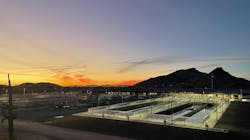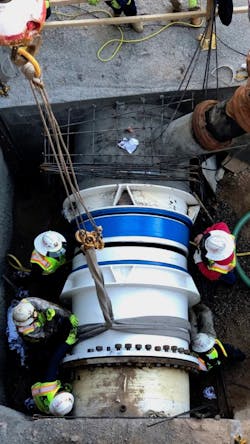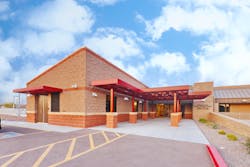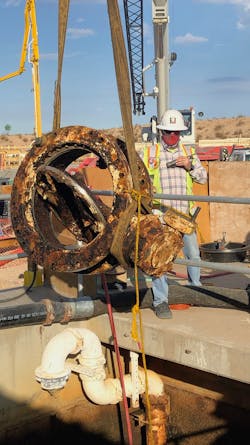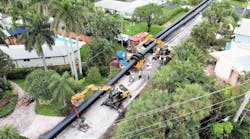Glendale and Peoria, Arizona’s population growth expectation forced an expansion upgrade to the Pyramid Peak Water Treatment Plant.
The facility’s original construction dates back to 1985 followed by its first expansion in 1999. In upgrading this second time, Pyramid Peak sought improvements to its chemical pumps, piping and tanks in addition to replacing its main motor control center (MCC) as well as two generators.
Due to the scale and complexity of the work, the city of Glendale elected to use construction manager at risk (CMAR) to establish coordination among project stakeholders — Glendale, Peoria, Black & Veatch and McCarthy Building Companies — during design and construction phases.
While the delivery method saved on costs and improved scheduling, it also established trust to keep all parties involved pointed in the direction of benefiting the local communities with a 15 million gallon per day expansion.
“The trust that was established early in the project during our extensive partnering session with the cities, design, engineering and construction project partners, and fostered through transparency and ongoing communication, was key to the success of Pyramid Peak,” said Tim Nicoll, Project Director, McCarthy Building Companies. “Together, everyone addressed the goals and community needs with a plan that was executed and revisited as hurdles arose. “
The collaborative teams identified an unknown electrical ductbank during the early construction phase. This ducktbank was in conflict with the new headworks bypass channel and relocating it would disrupt on-going service for the treatment plant, increase costs and extend the project schedule. McCarthy and Black & Veatch teams overcame this hurdle through extensive research, open communications and a design enhancement, saving more than $200,000 had the ductbank needed to be relocated.
"Doing rehabilitation and replacement as well as expansion at an existing treatment facility often results in unanticipated challenges,” said Lisa Jackson, project manager and vice president of Black & Veatch. “We had our share of challenges. However, the teamwork and collaboration between the project owners, Glendale’s treatment plant operations and O&M team, the contractor and engineer allowed us to overcome and find solutions that were best for the project and the long-term treatment plant viability and operations. This project truly demonstrates the value of communication, commitment to common goals and collaboration.”
“Also key to the project’s success was the flexibility that self-perform teams provided, allowing for quick responses and adjustments in scope, addressing challenges, as well as changing crew and equipment needs, ultimately saving time and money for the project,” Nicoll said.
Upon completion, the original intended work was done in addition to replacement of 14 filters not found in the original scope of the work. However, the collaborative nature of the project and quick thinking of the design and construction stakeholders kept the project within its original budget and within its original project schedule. All the while, the citizens of Glendale and Peoria received clean drinking water and an asset that provides a solid future for population growth.
“The expansion to the Pyramid Peak Water Treatment Plant has benefited the communities of Glendale and Peoria with an additional 15 million gallons per day, as well as replacing aging equipment to ensure operation certainty and water security for years to come,” said Craig Johnson, director of water services for the city of Glendale.
